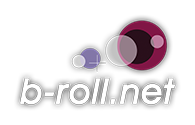Tubecamera-or-bust,
Not trying to be a pain in the neck, but you do leave out important information that is required. Since you are giving us bits and pieces, I will try to fill in the gaps..
If I read correctly, the H4n will record 4 tracks, Input 1 and 2, and an eternal mic via the 3.5 stereo plug. If I read correctly, the last firmware allows all track levels to be adjusted individually. But some say only the external inputs, not the stereo mic input.
Maybe you can clear that up.
Tell us how you set up the H4n to take 2 tracks of audio and a two TC tracks.
Second the sound quality isn't as great as we think. I came across a test that said that a old DAT had better sound. But he said was good enough for video
The Zoom H4n doesn't look very good when measured, which is probably why Zoom doesn't specify anything about audio performance.
You won't hear any of these audio defects when used as intended, but it's sad that any decent 44.1/16-bit DAT recorder of 20 years ago still can run rings around the "96/24-bit" Zoom H4n technically.
All measurements were made as powered by two Sanyo AA Eneloop. The advantage of this is complete isolation as compared to using USB or an AC adapter.
I used a $50,000 Rhode & Schwarz UPL audio analyzer to perform these measurements.
So, the sound isn't near a Sound Devices or Zaxcom recorder. Also, not a good a PDW-800.
About the Movie Slate App...
According to their site, if jammed, to stand alone timecode generator or timecode buddy, it will keep within 2 frames. So, if you are using one camera, and jam from the camera, it should be okay, but only as good as the camera it's jammed to. If more that one camera is used, all bets are off. Two frames isn't bad. It's about the same for a non TC recorder that runs for an hour.
I do agree with Starman that a clock in an iPad is not accurate enough. The sound board that Star and I read say no to iPads for TC. Most use the Movie Slate App for reports, but none use as the master TC. You may consider them old school, but they said pro equipment for pro work.
Also, you are misleading us that the recorder will do a BFW and MP3 at the same time. You are using software to convert that. Many transcribe companies can take a BFW, now a days. I think they are a few softwares that will convert a BFW to MP3 with TC on one track for free or very cheap.
Another fact from the boys from the sound board is that the H4n can't take a +4 signal. It's too hot. The line level is only available via the 1/4 plugs, not the XLR's. And those are not made to take an instrument level.
Finally, you can get a TASCAM HD-P2 for about $700 bucks. Yes, it's a two track recorder with embedded TC, but you mention that you only use two track for audio, and the other two for TC. Buy the Movie Slate App for your phone. Buy the cable to jam Movie Slate from the camera or TC source.
You have true pro system for under $900 bucks. The only extra work would be to convert a file to MP3. With $150 bucks, you can get a small recorder with the correct cable to record a MP3 and TC. Again, that is an extra charge. A few jobs, and it would cover the cost of the recorder and cable.
The sound board that Star and I read is made up a soundmixers that do film, television, and commercial sound. Yes, some have all the goodies, but some do use H4n for backup recording. It is not their main recorder. It's for bag use when the producer doesn't want to pay for a two track Sound Device with TC. The site has good information about field recording. The ones that use the H4n don't input TC two tracks of sound at the same time. They rather use a pro unit.
I would link you to the user group, but they are sort of private.
I am not a sound expert as Starman, He does production sound, and has the pro equipment.
As the saying goes, you paid for what you get.
